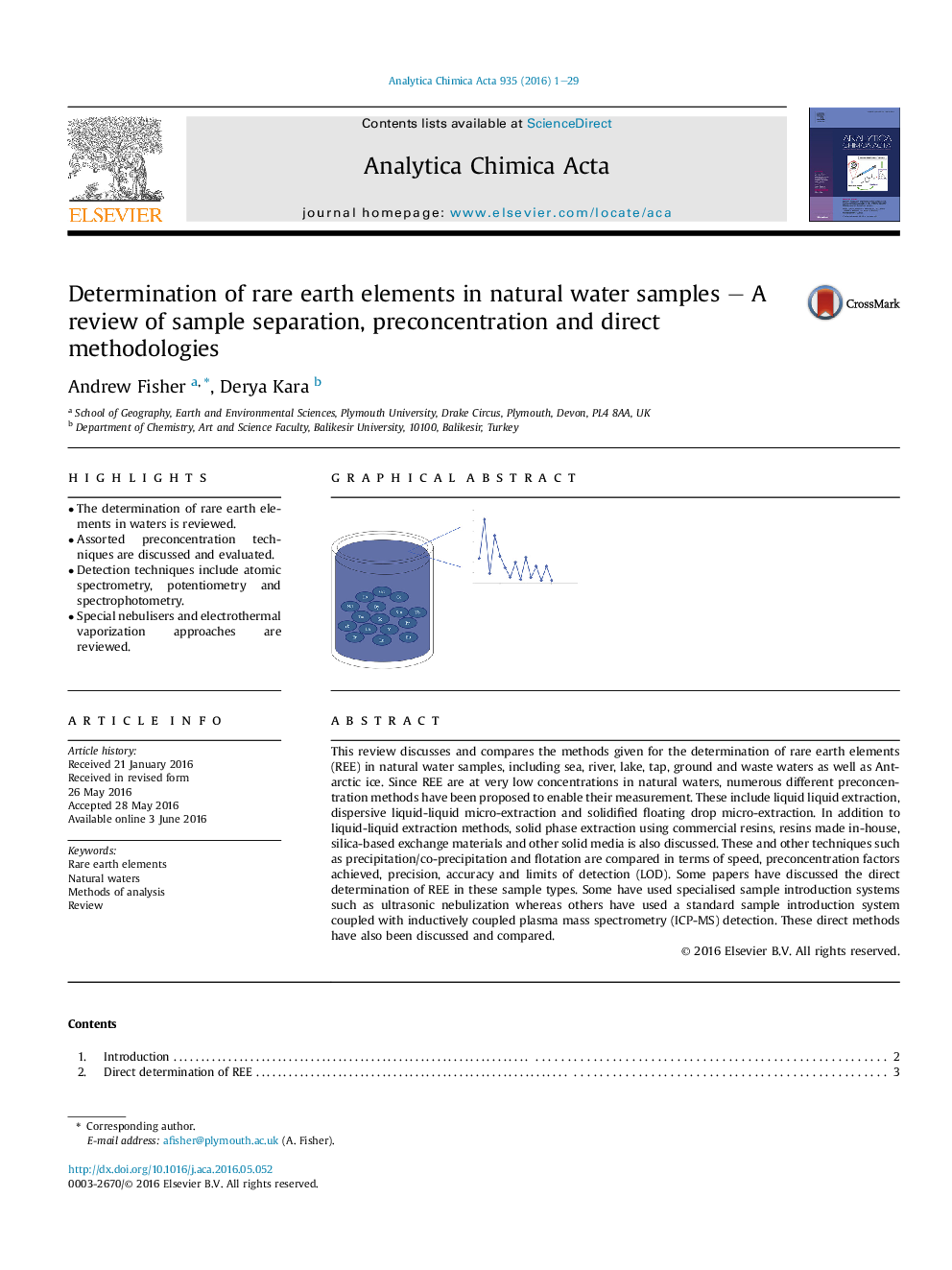| Article ID | Journal | Published Year | Pages | File Type |
|---|---|---|---|---|
| 1162790 | Analytica Chimica Acta | 2016 | 29 Pages |
•The determination of rare earth elements in waters is reviewed.•Assorted preconcentration techniques are discussed and evaluated.•Detection techniques include atomic spectrometry, potentiometry and spectrophotometry.•Special nebulisers and electrothermal vaporization approaches are reviewed.
This review discusses and compares the methods given for the determination of rare earth elements (REE) in natural water samples, including sea, river, lake, tap, ground and waste waters as well as Antarctic ice. Since REE are at very low concentrations in natural waters, numerous different preconcentration methods have been proposed to enable their measurement. These include liquid liquid extraction, dispersive liquid-liquid micro-extraction and solidified floating drop micro-extraction. In addition to liquid-liquid extraction methods, solid phase extraction using commercial resins, resins made in-house, silica-based exchange materials and other solid media is also discussed. These and other techniques such as precipitation/co-precipitation and flotation are compared in terms of speed, preconcentration factors achieved, precision, accuracy and limits of detection (LOD). Some papers have discussed the direct determination of REE in these sample types. Some have used specialised sample introduction systems such as ultrasonic nebulization whereas others have used a standard sample introduction system coupled with inductively coupled plasma mass spectrometry (ICP-MS) detection. These direct methods have also been discussed and compared.
Graphical abstractFigure optionsDownload full-size imageDownload as PowerPoint slide
